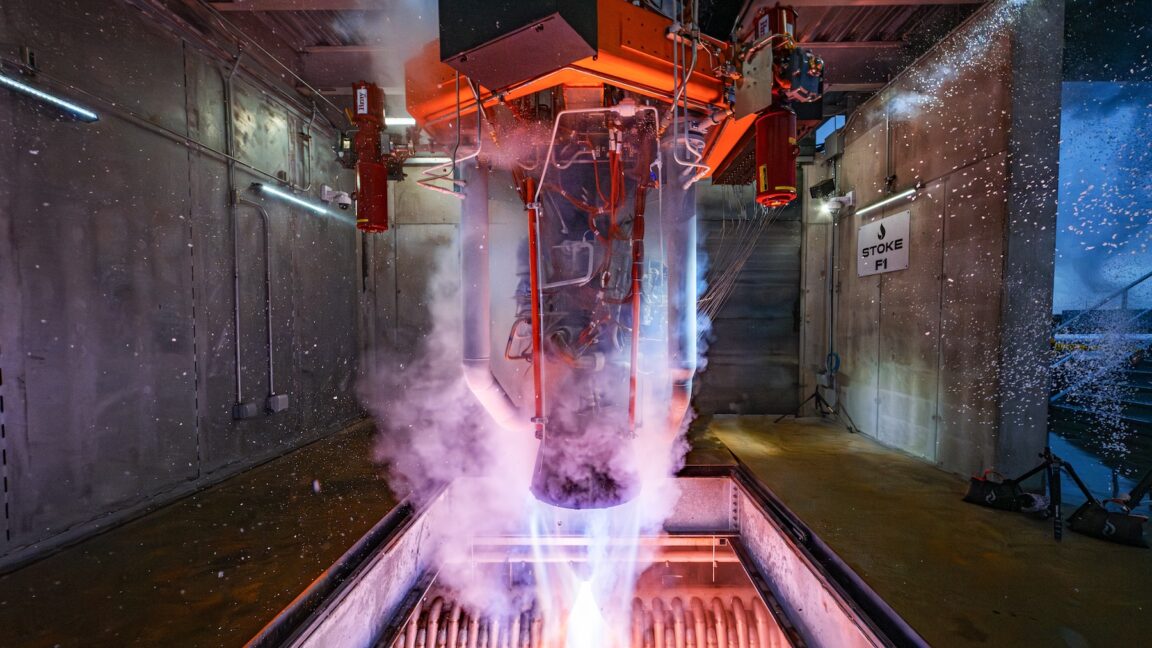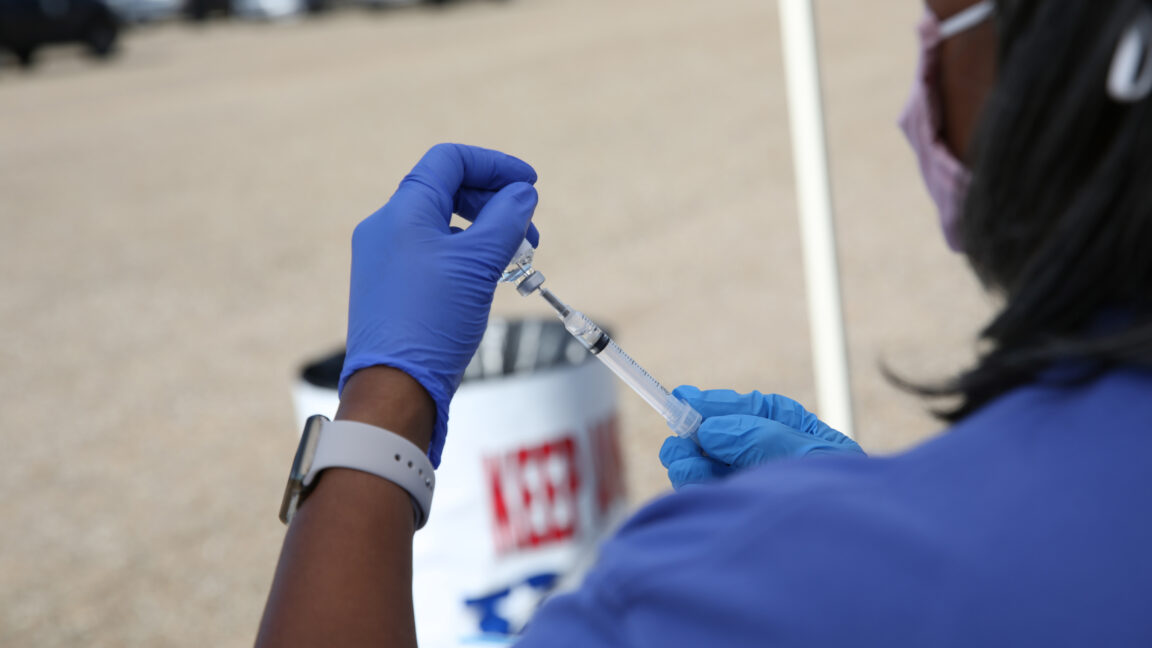Listening for Whale Sounds 1,000 feet Deep in the Antarctic Ocean

GERLACHE STRAIT, Antarctica—The steel gray sea mirrored the overcast sky as Heidi Ahonen buckled her life jacket over her red waterproof coat. In just a few minutes she would jet out on a small inflatable zodiac boat in search of an underwater recording device she hoped to retrieve from more than 1,000 feet below the water’s surface.
She had waited nearly a year for this moment. Thankfully the weather was cooperating, she thought. Too much wind or wave action in the strait could have jeopardized her mission on this mid-January morning.
Still, she said, “I’m nervous,” as she prepared to board the zodiac from the tender pit of the MS Roald Amundsen, an 11-deck hybrid-powered cruise ship named after the Norwegian explorer who became the first person to cross Antarctica and reach the South Pole.
“What if the recorder flooded, or its batteries died?” said Ahonen, a research scientist from Finland who specializes in bioacoustics, a scientific field that examines animal behavior by the sounds they make. It had been 10 months since the device was released into the Gerlache Strait, a 120-mile-long waterway in the Southern Ocean—also known as the Antarctic Ocean—that separates a group of islands known as the Palmer Archipelago from the northwest coast of the Antarctic Peninsula.
Theoretically, she knew, it should have stayed close to where it was originally sunk along with a 50-pound weight attached to a mooring line near to where the ship now idled, deep enough to avoid getting snagged on icebergs. But it wasn’t out of the question that strong currents could have forced it to drift. What if she couldn’t find it?
It was her first time leading a project in Antarctica and she felt pressure to succeed.
“Relax,” said her partner, Andrew Lowther, a marine mammal ecologist from Australia who’s conducted field research in Antarctica for more than a decade. “We’ll either find it or we won’t.”
Uncertainty was a given working in one of the most extreme environments on Earth.
Last year, Ahonen launched a project through the Norwegian Polar Institute based in Tromsø, Norway, where she’s a senior researcher, to monitor the year-round presence of baleen whales in the strait that feed on reddish shrimp-like crustaceans called krill. There are 15 species of baleen whales, including the humpback, fin and the Antarctic minke whale that use comb-like plates of baleen instead of teeth to filter tiny prey out of the water. Some can eat more than 3,000 pounds of krill in a day.

Competing for Krill
There’s an estimated 62 million tons of krill in the area where the fishery operates near the Antarctic Peninsula. Only around one percent of this biomass—620,000 tons—can be legally caught in this place, known as “area 48,” according to the Antarctic marine commission. This “trigger limit” was established by the organization in 1991 to try to maintain a sustainable fishery and avoid disrupting the rest of the marine ecosystem. But Lowther, Ahonen’s partner, who is also a research scientist at the Norwegian Polar Institute and has been studying marine predators for nearly 20 years said, “The level of sustainability is questionable.” It depends on where the krill is caught, he said. If too much krill are taken from an area where predators depend on their presence, there could be negative impacts. Suffering penguin populations have already been linked to a decline in krill in some areas along the peninsula, mostly due to climate change. Other research suggests pregnancy rates amongst humpback whales may also be connected to changing krill populations. As ocean temperatures rise, much of the sea ice krill depend on for food and shelter, especially as juveniles, is melting, forcing some of the tiny creatures to move south toward colder waters. The Gerlache Strait, which is known to be an important area for larval krill, is becoming increasingly ice free, for example.
“We’re still using monitoring techniques from 1982 to try and solve a 2025 problem.” — Andrew Lowther, Norwegian Polar InstituteBut, voluntary measures are not sufficient, said Lowther, who keeps a trimmed salt and pepper beard and mustache and has long brown hair he pulls back into a ponytail most days. Since 2014, he’s been actively involved in CCAMLR discussions on krill fishing, pushing for the organization to update their fisheries management strategy and environmental monitoring mechanisms to take into account both climate change and whales, which he said they have not done to date. “We’re still using monitoring techniques from 1982 to try and solve a 2025 problem,” he said.“People need to have confidence that the monitoring system in place is capable of detecting changes.” When the commission first established a mechanism to track how fishing and other environmental variables were impacting wildlife in Antarctica in the 1980s, CCAMLR hadn’t considered whales. There were hardly any left. After almost a century of being hunted and harvested commercially for their oil, whales had been nearly driven to extinction. In recent decades, however, some species like humpbacks have experienced remarkable resurgences since the International Whaling Commission banned commercial hunting of the animals in 1986. Some of these whales travel more than 6,000 miles from their warmer breeding and calving grounds along the west coast of South America or the Great Barrier Reef in Australia to feed on Antarctic krill each year. Now, as whales re-establish themselves as the largest air-breathing krill predators in the region, Ahonen and Lowther both say it’s essential to monitor their populations and obtain concrete data that can offer a better understanding of how the cetaceans’ renewed presence is affecting the overall ecosystem and if they are competing with the fishing industry for food.

Recording Polar Soundscapes
As a bioacoustician, Ahonen is intrigued by how much can be learned by studying the diverse sounds wildlife makes. “I’m fascinated,” she said. “I’ve always been interested in how animals communicate.” Many cetaceans, which include whales, dolphins and porpoises, produce unique calls, whistles and songs through which they recognize one another, summon their young, attract mates, hunt and navigate. Their vocally active nature makes them perfect candidates to study through passive acoustic monitoring, a scientific method of observing marine ecosystems over time by using underwater microphones called hydrophones to detect not only animal sounds, but also noise created by human activity.“I’ve always been interested in how animals communicate.” — Heidi Ahonen, Norwegian Polar InstituteAs part of her previous research, for instance, at the Norwegian Polar Institute, which conducts scientific research and environmental monitoring in the Arctic and Antarctica, Ahonen had investigated the impact of underwater noise from shipping traffic and oil and gas exploration on marine mammals like narwhals in the Fram Strait, a passage in the Arctic Ocean, which runs between Greenland and Svalbard, Norway. “These guys are my favorites,” she told a group of guests listening to her lecture on bioacoustics aboard the MS Roald Amundsen as she played them an audio clip of the long single-tusked cetaceans’ squeaks and clicks they make to detect their prey using echolocation. Natural phenomena can also be studied using this method to record wind, waves, rain and ice, one of the most dominant noises in polar soundscapes, she said. Ice sizzles and pops when it melts on land. And in the ocean, sea ice creaks and groans as it expands and contracts. Thunderous booms erupt when icebergs collide. Ahonen reminded the guests that just the day before, some of them might have heard a glacier calving before they saw it.

Searching for Soundtraps
Ten days into their journey, Ahonen pulled on her waterproof pants, thick rubber boots and red wind and rainproof jacket. She felt butterflies in her stomach as she prepared to head out on the zodiac that cloudy mid-January morning. “I don’t like being in the spotlight,” she said, pulling a woolen headband over her ears to protect them from the cold. Yet, nearly 400 passengers aboard the ship were being invited to watch her. Lowther used a wrist-mounted GPS navigator to direct the boat captain toward the coordinates where the first of the SoundTraps was supposedly deployed. Harry had intentionally been placed in the southern part of the Gerlache Strait where krill fishing did not typically take place, but was a popular tourism destination. The recordings collected in this location would serve as a sort of a baseline of data that Ahonen could later use to compare how whale behavior and distribution differed in places where the fishery operated and where it did not. They might also track the noise levels made by cruise vessels. Understanding—and reducing when possible—the impact of cruise ships and the noise they make was a priority for the expedition cruise company, said Morgan. “Marine noise is a massive issue,” he said. The cruise company had already tried to reduce this impact, as well as their carbon footprint, with the MS Roald Amundsen, the world’s first hybrid battery-powered cruise ship, which it had unveiled in 2019. “We can, in a really sensitive area, just run on batteries and be a silent ship.” In just a few minutes, Lowther signaled for the zodiac to slow down and come to a stop. They should be close, he said. Morgan swiftly let down a transponding hydrophone off the side of the boat into the water. Ahonen then used another communication device called a deck box to transmit a signal through the underwater microphone to locate the acoustic release attached to the SoundTrap. When triggered, this piece of equipment frees the recorder from its anchored hold on the seafloor so it can surface. Several minutes passed in silence, interrupted only by the sounds of a few humpbacks exhaling. “Look! Whale!” shouted Morgan, pointing toward a misty stream of water spouting from one of the animals’ blowholes about 40 feet away.
“Platforms of Opportunity”
Two days later, Ahonen successfully retrieved the second SoundTrap named Hermione, north of where she picked up Harry, and with much more confidence. When she got back to the ship, she and Lowther quickly deployed a refreshed Harry. They had prepared it with new batteries and clean memory cards so that it could take Hermione’s place and continue recording in the same spot for another year. Then they hurried Hermione to the ship’s science center, eager to give guests a chance to get an up-close view and learn how it works. It didn’t take long for a small crowd to gather around the rectangular flame-colored apparatus Ahonen laid on a table. She explained the orange frame they were inspecting served as a flotation device for the cylindrical hydrophone it encapsulated, which had been set to record five minutes of sound at the top of every hour for the last 10 months. “Each of these units has over 7,000 files of five minutes from every hour. So that will be a fair amount of data to go through,” she said. It could take months before she could analyze them all with the help of colleagues and determine if any of the animal sounds recorded overlapped with those from fishing operations or cruise vessels. Ships like the MS Roald Amundsen provide a unique environment for both scientists and tourists to interact. “They’re platforms of opportunity,” said Verena Meraldi, HX’s chief scientist, who oversees the scientific research projects the company supports. “Having access to a researcher who can give an answer to all of your questions is amazing. I mean, how many people can have that opportunity to see them work in real time?” Last year, the company hosted 87 expert researchers from more than 10 institutions and universities.













